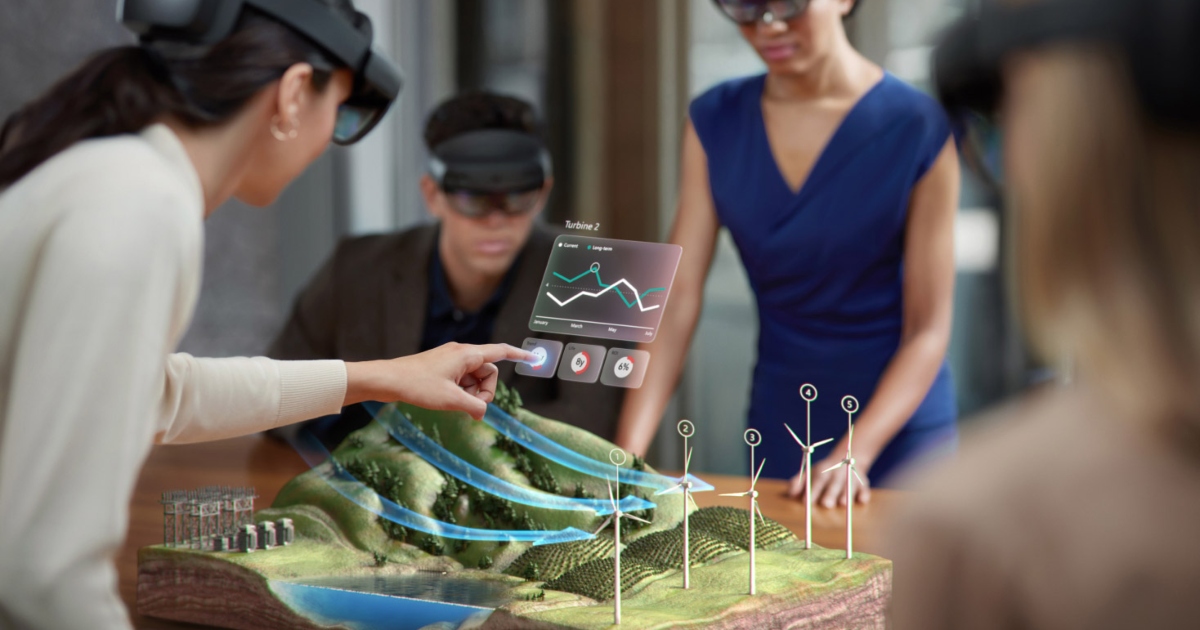Augmented Reality (AR) is transforming the way we perceive and interact with the world around us. By overlaying digital content onto the physical environment, AR creates immersive experiences that enhance our understanding, engagement, and productivity. This article explores the concept of AR, its applications, benefits, challenges, and its potential to shape the future.
What is Augmented Reality (AR)?
Augmented Reality (AR) refers to a technology that superimposes computer-generated elements—such as images, sounds, and data—onto the real world. Unlike virtual reality (VR), which immerses users in a fully digital environment, AR blends digital and physical realities, offering a seamless interaction between the two. AR experiences can be delivered through smartphones, tablets, AR glasses, and other specialized devices.
The Evolution of Augmented Reality
The development of AR can be traced back several decades, marked by significant milestones:
- 1968: Computer scientist Ivan Sutherland developed the first AR system, a head-mounted display called the Sword of Damocles.
- 1990: The term “augmented reality” was coined by Tom Caudell, describing a tool for assisting assembly workers.
- 2010s: AR gained mainstream attention with mobile applications like Pokémon GO and advancements in wearable devices.
- 2020s: AR continues to evolve, integrating with artificial intelligence (AI) and 5G technologies to deliver richer experiences.
Applications of Augmented Reality
AR is making its mark across diverse industries, revolutionizing processes and enhancing user experiences:
1. Retail and E-commerce
AR allows customers to visualize products in their environment before purchasing. From trying on virtual clothing to previewing furniture in a room, AR bridges the gap between online and in-store shopping.
2. Education and Training
AR enhances learning by providing interactive and engaging educational content. Virtual anatomy lessons, historical site recreations, and AR-powered simulations improve comprehension and retention.
3. Healthcare
In healthcare, AR assists in complex surgeries by overlaying critical information onto the surgeon’s view. It is also used for patient education, rehabilitation, and training medical professionals.
4. Real Estate
AR simplifies property viewing by enabling virtual walkthroughs of homes and buildings. This technology helps buyers and renters make informed decisions without physical visits.
5. Entertainment and Gaming
AR transforms entertainment by creating immersive gaming experiences and interactive storytelling. AR-powered games like Pokémon GO have set new standards for engaging gameplay.
6. Manufacturing and Maintenance
AR improves productivity in manufacturing and maintenance by overlaying instructions and real-time data onto equipment. Workers can perform tasks efficiently with reduced errors.
7. Travel and Tourism
AR enriches travel experiences by providing real-time information about landmarks, historical sites, and cultural artifacts through mobile devices or AR glasses.
8. Marketing and Advertising
Brands use AR to create interactive advertisements that capture attention and enhance customer engagement. AR campaigns often go viral, boosting brand visibility and reach.
Benefits of Augmented Reality
The adoption of AR offers numerous advantages, driving innovation and efficiency:
- Enhanced User Experience: AR creates engaging and interactive experiences, improving satisfaction and retention.
- Improved Decision-Making: By visualizing options in real-world contexts, users can make informed decisions.
- Increased Efficiency: AR streamlines processes, reduces errors, and saves time in industries like manufacturing and healthcare.
- Cost Savings: AR reduces the need for physical prototypes, on-site visits, and extensive training sessions, cutting costs for businesses.
- Accessibility: AR democratizes access to information and experiences, making them available anytime and anywhere.
Challenges and Limitations of AR
Despite its potential, AR faces several challenges and limitations:
- High Development Costs: Creating AR content and applications requires significant investment in technology and expertise.
- Hardware Limitations: Advanced AR experiences often rely on specialized devices that may be costly and bulky.
- Privacy Concerns: AR applications collect and process large amounts of user data, raising privacy and security issues.
- Technical Constraints: AR systems require robust infrastructure, including high-speed internet and powerful processors, to function effectively.
- User Adoption: Many users are still unfamiliar with AR technology, creating a barrier to widespread adoption.
The Future of Augmented Reality
The future of AR is promising, with ongoing advancements expected to address current challenges and unlock new possibilities:
- Integration with AI: Combining AR with artificial intelligence will enable smarter and more personalized experiences, such as virtual assistants that adapt to user preferences.
- 5G Connectivity: The rollout of 5G networks will enhance AR capabilities by enabling faster data transfer and reducing latency.
- AR Glasses: Lightweight, affordable AR glasses are set to replace smartphones as the primary medium for AR experiences.
- Smart Cities: AR will play a crucial role in smart city initiatives, providing real-time navigation, public information, and interactive urban planning tools.
- Workplace Collaboration: AR-powered tools will transform remote work by creating virtual meeting spaces and collaborative environments.
Conclusion
Augmented Reality is a transformative technology that bridges the gap between the real and virtual worlds, offering unparalleled opportunities for innovation and growth. As AR continues to evolve, it will redefine industries, enhance user experiences, and drive economic development. By addressing current challenges and embracing advancements, AR has the potential to shape a future where technology seamlessly integrates with everyday life.





